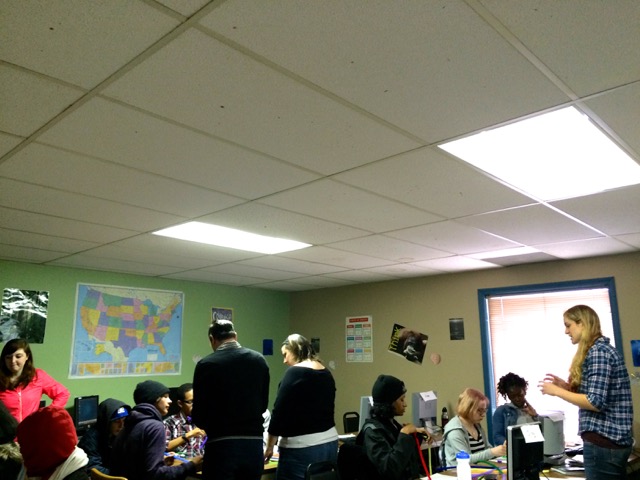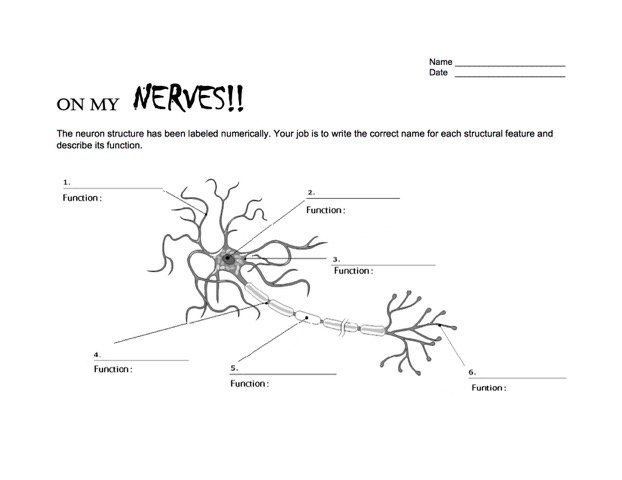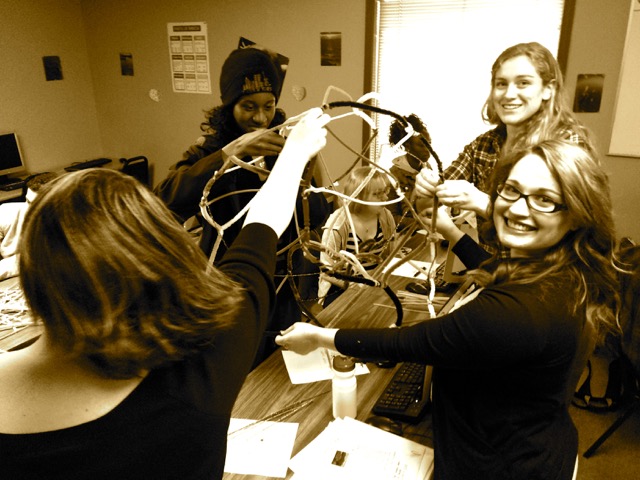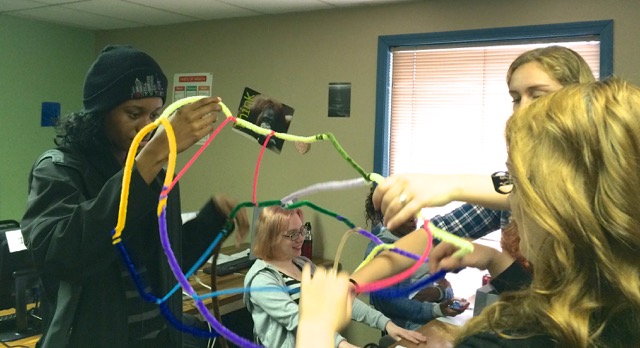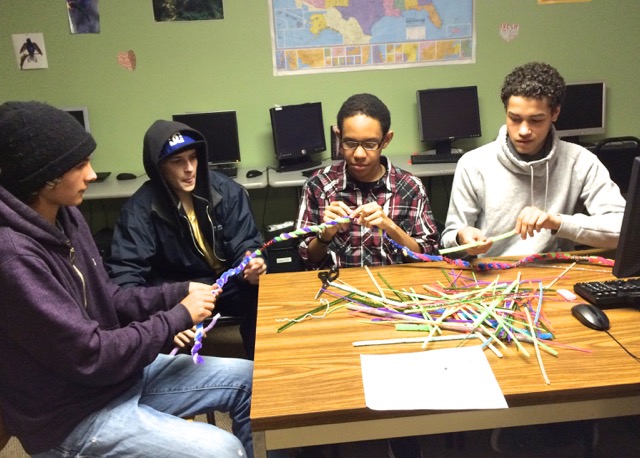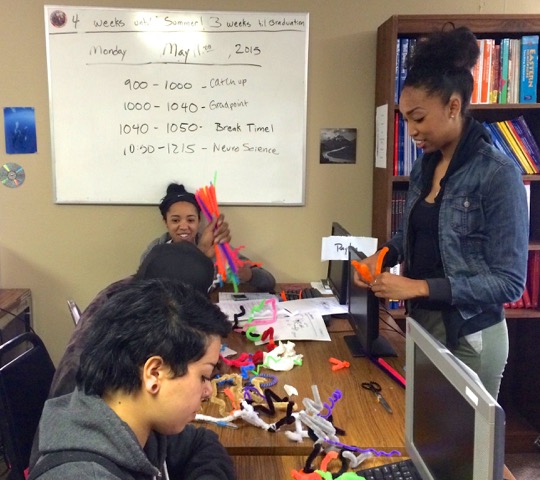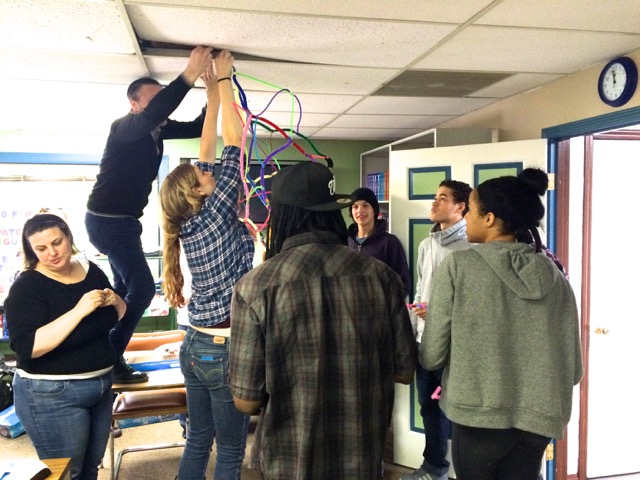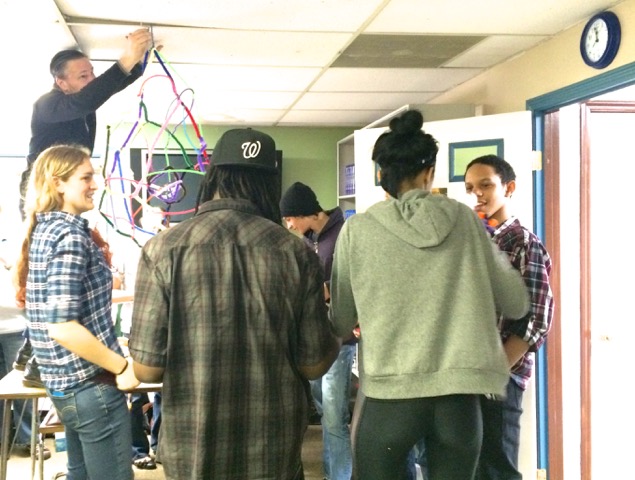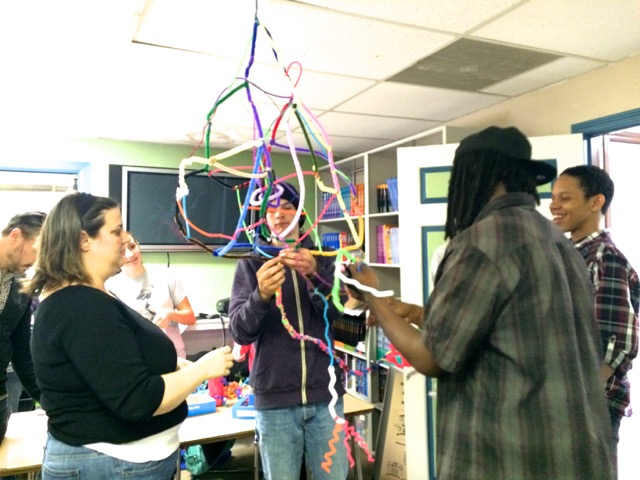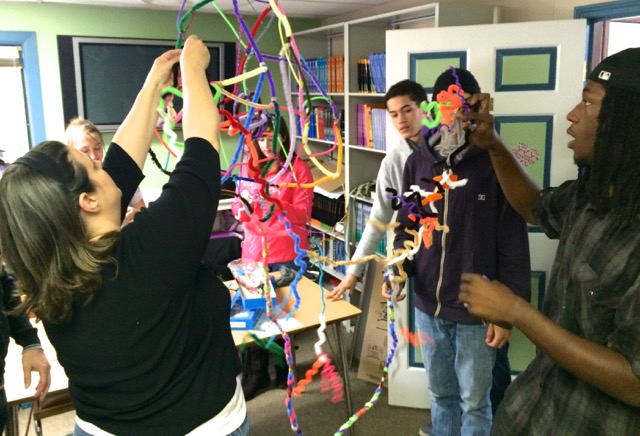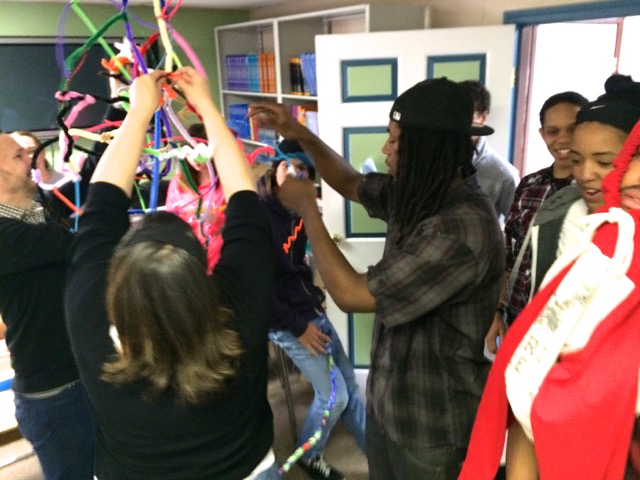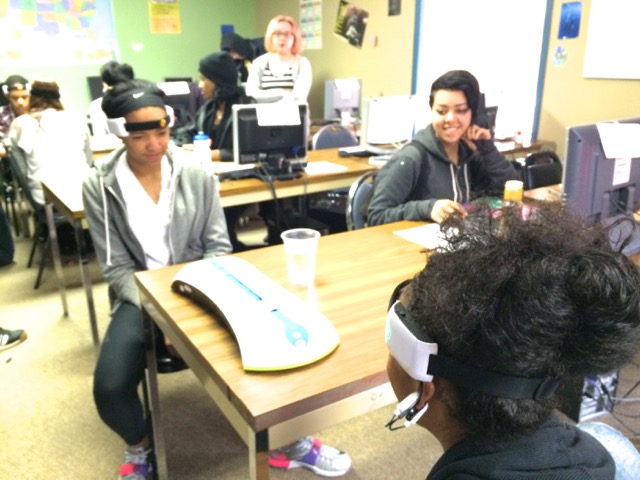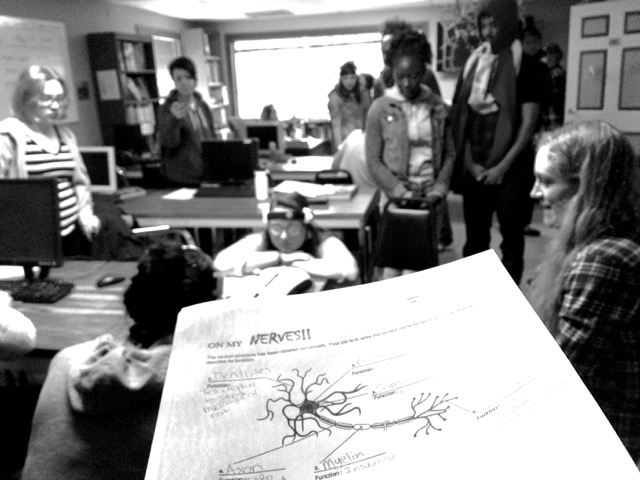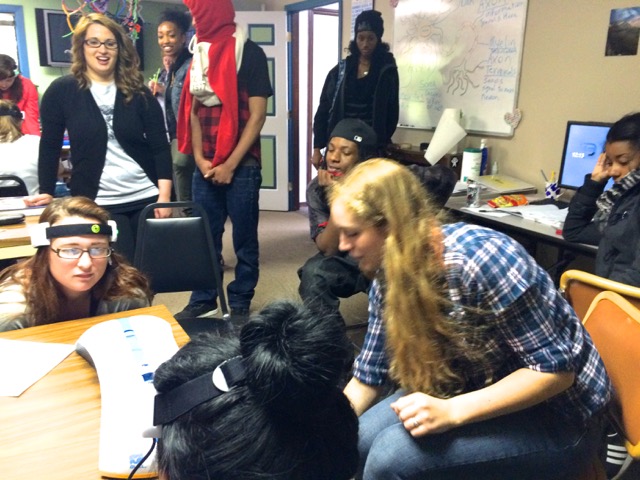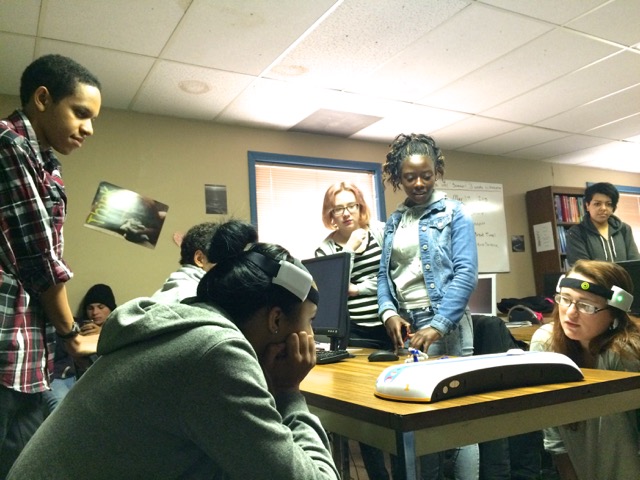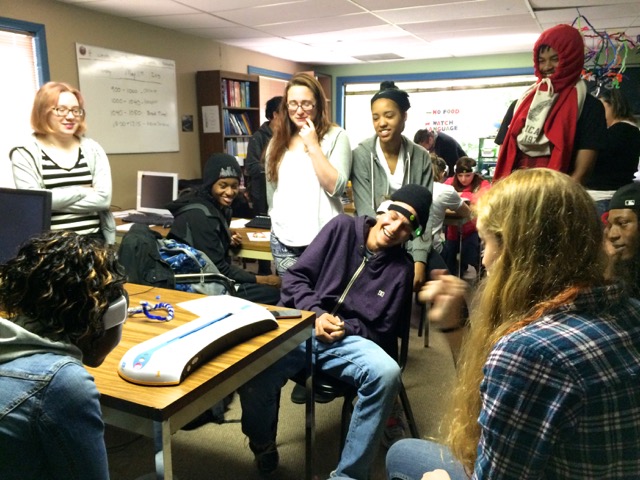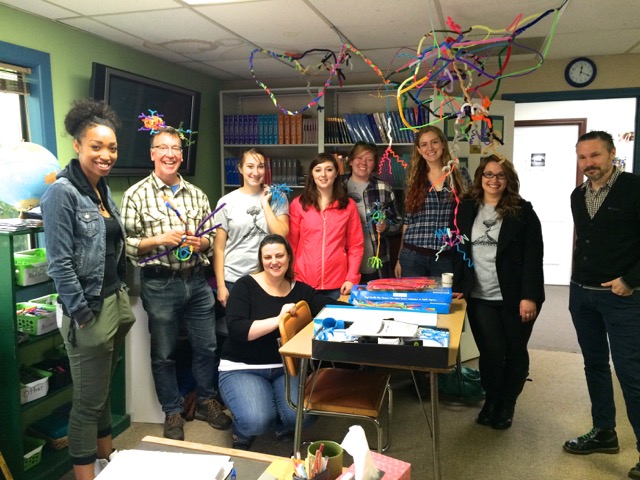Sarah Neveux from WSU Vancouver Neuroscience took the teaching lead this morning, and focused on the neuron, that key cellular component of the complex networks that make up our remarkable nervous systems…
We began by reviewing the cortical lobes, and then delved into a discussion of how the 200 billion or so neurons we start with as infants reach out to form neural networks, connected chemically to each other across gaps called synapses…
Each neuron (and we’re down to 100 billion or so by our early twenties!) sums up to 10,000 distinct synaptic inputs (some excitatory, some inhibitory) at their branching dendrites, and sends electric currents coursing through axons to their collateral ends, or terminals…
Students filled out a Noggin worksheet, identifying the structure and function of the dendrites, cell body (or soma), the nucleus, the axon, and the insulating, current-speeding, myelin sheaths…
We then divided everyone into groups, each tasked with building a different part of the neuron out of pipe cleaners. Students, including the soma builders, were very ambitious!
Then it was time to put it all together!
To demonstrate the electrical nature of neural activity, we spent the rest of the class playing the Mindflex Duel game, which detects neural activity through an electrode placed over the left frontal lobe (with a reference electrode clipped to the ear)…
The headset sends the signal wirelessly to a base station, to move a ball suspended by blowing air across a track. Students enjoyed competing with each other, to see who could literally “think” that ball to their opponent’s side..!
Many thanks to the students at McCoy, for welcoming us into their Monday classrooms!





